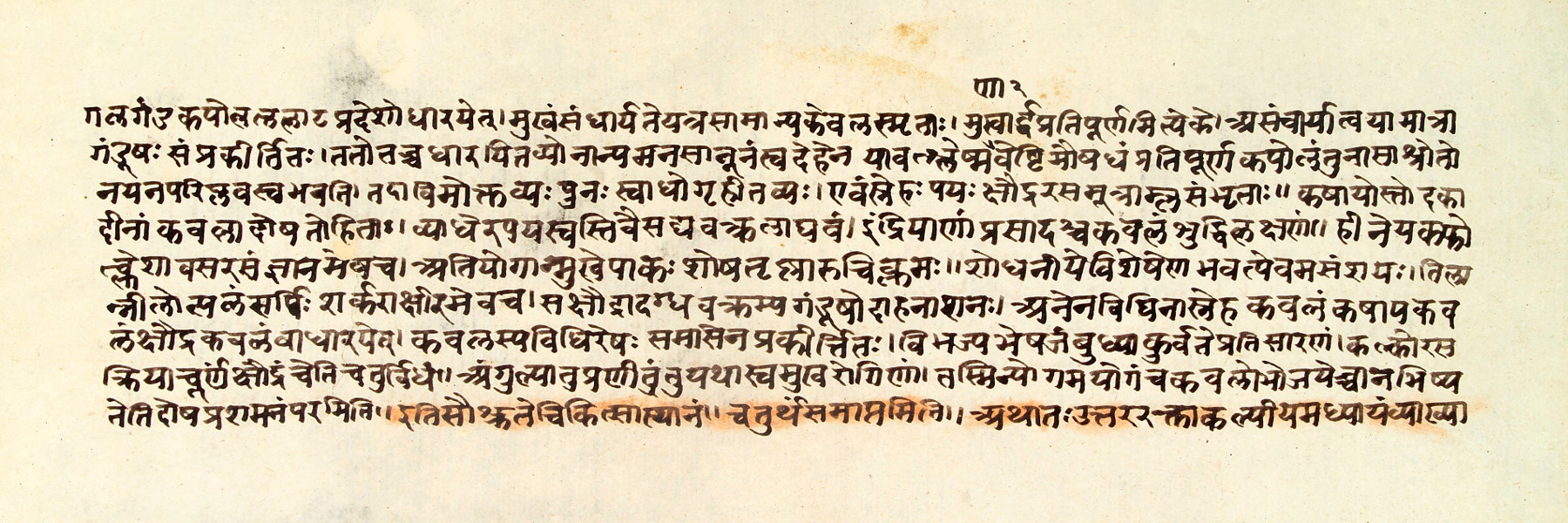Origin and Development of Ayurveda (A Brief History) by V. Narayanaswamy, Former Professor, College of Indian Medicine, Madras – India. This article is an excerpt from the article originally published in Ancient Science of Life, Vol. I, No.1, July 1981.
Ayurveda is the system of medicine that evolved in India with a rationale logical foundation, and it has survived as a distinct entity from remote antiquity to the present day.
The fundamentals on which the Ayurvedic system is based are essentially true for all times. These are based on human actors, on intrinsic causes.
The origin of Ayurveda is attributed to Atharva Veda where mention is made several diseases with their treatments. Later, from the 6th Century BC to 7th Century AD there was systematic development of the science and it is called Samhita period, when a number of classical works were produced by several authors and during this period there is evidence of organized medical care.
Medicine is as old as life itself. The survival of the species demands that simultaneously with the appearance of disease, all living things must have also evolved the means to combat disease. The higher animals are guided by instinct to seek remedies for illness in plants and herbs. Man with his superior intelligence must necessarily have extended the scope of this search for remedies.
Medicine in the Vedas and Puranas
References to medicine are found in the earliest texts including the Vedas. The mythological version of the origin of the Ayurvedic system is that Brahma (the Indian god of creation) recited it to Prajapati, who handed it down to sages Atreya, Punarvasu, etc.
In the Rig Veda there are reference to the first divine physician Rudra and of how the Aswini Kumaras (doctors of Indian gods) cured Chyavana of senility. Although medicinal references are found in the Rig Veda, systematic and comprehensive treatment of medicine is to be found only in the Atharva Veda. The Atharva Veda is considered to have originated later than the Rig Veda, and contains a description of diseases and the cure of them.
Origin of Ancient Ayurvedic Texts
Charaka Samhita: One of the first medicine text is by Agnivesa. During Caraka’s time the Agnivesa Samhita has partly perished, and Caraka undertook the task of restoring the work, filing up the gaps and re-writing the parts of the work, which had become obscure. Caraka is believed to have lived in the 600 B.C.
The Charaka Samhita has undergone a further revision by one Dridabala. Many chapters devoted to Cikitsa and the whole Kalpa and Siddhi stanas have been re-written by Dridabala as stated in the colophon of each chapter.
Susruta Samhita: Coming after Charaka Samhita, this treatise deals with surgical diseases, and diseases of the special organs such as the eye, ear etc. The age of Susruta is not known. It is generally believed that Susruta lived sometime around 600 B.C. Susruta Samhita could have undergone several revisions, the last of which was attributed to Nagarjuna Rajatarangini places him in the 300 B.C.

Bhela Samhita & Harita Samhita: Bhela Samhita was probably written by a contemporary of Agnivesa. Another book which has been written is Harita Samhita, who probably belongs to later times.
Bhavaprakasa: Bhavaprakasa, the last and perhaps the best work of the medevial age, is that of Bhavamisra. The period from the 10th to the 6th Century A.D. is singularly unproductive in the literature of Ayurveda. When Bhavamisra resumed the traditions of writing he reviewed the developments of the intervening period and incorporated in his work various new diseases and drugs.
Source: Ancient Science of Life, Vol. I, No.1, July 1981
